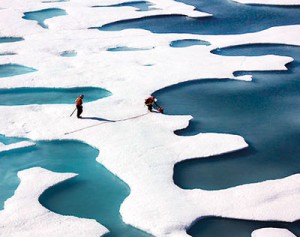Sunday Times 2
India’s Arctic station to help monsoon forecast
[NEW DELHI] India’s new Arctic observatory is expected to provide data crucial to understanding climate patterns in the polar region and its possible influence on the Indian monsoon, that is vital to agriculture in the subcontinent.
On 23 July this year, India deployed the country’s first multi-sensor moored observatory in the Kongsfjorden, located halfway between Norway and the North Pole. Deployed by a team of scientists from the Earth Systems Science Organisation, the National Centre for Antarctic and Ocean Research (NCAOR) and the National Institute of Ocean Technology, the observatory will help Indian researchers collect primary data on long-term climate variability in the Arctic.

Image credit: NASA/Kathryn Hansen
According to K. P. Krishnan, a scientist attached to India’s Arctic research programme, the observatory will use 10 different sensors to collect real-time data on seawater temperature, salinity, current and other vital parameters of the fjord.
The new observatory, christened IndARC, is anchored some 1,100 kilometres away from the North Pole at a depth of 192 metres. It will be serviced every year to download data and calibrate sensors.
“The Arctic region is of special significance to the Indian subcontinent due to the existence of atmospheric connection between the northern polar region and the Indian monsoon intensity,” Krishnan said. “The new data could be used to fine tune models for predicting the various facets of the Indian monsoon system.”
Data collected from hydrographic surveys conducted by the NCAOR in the Kongsfjorden since 2010, mostly during the summer and autumn months, have provided much needed information on water mass exchanges and fresh water inputs.
“The moored lab removes one of the chief hurdles of studying climate in those climes during intense winters,” says Rajan Sivaramakrishnan, director, NCAOR. “Up until now, scientists have been able to work only in the summer months, but this pre-programmed lab will be collecting data round the year from various depths of the ocean.”
Kongsfjorden is considered to be a natural laboratory for studying Arctic climate variability as it receives varying climatic signals from the Arctic and the Atlantic regions in the course of an annual seasonal cycle, according to the NCAOR scientists.
India already maintains observatories in its own territorial waters – in the Arabian Sea, the Bay of Bengal and the Indian Ocean – and has been running a lab in the Ny-Alesund Island, a research town managed by Norway, since 2008.
(Courtesy SciDev.net)

